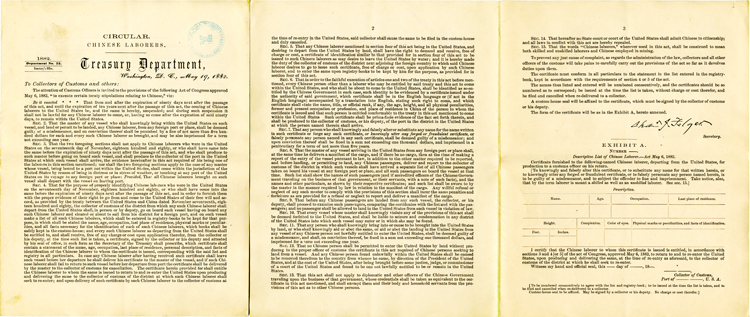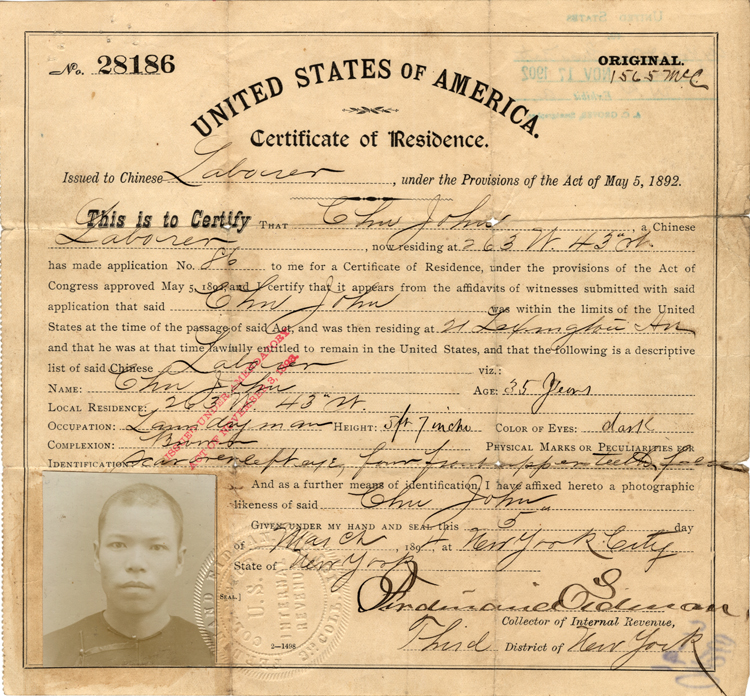In the late 1800s, racial tension towards Chinese mounted as Americans saw the booming immigrant population as a threat to their livelihood. These sentiments boiled over into violent, organized attacks on Chinese and manifested as anti-Chinese legislation. In 1882, Congress passed the Chinese Exclusion Act, the first federal law to bar entry to a group of immigrants based solely on nationality. The Act prohibited skilled and unskilled Chinese laborers from entering the country, although merchants, students, and diplomats could gain passage. The ten-year act was renewed in 1892 with the passing of the Geary Act, which among other acts intensified regulations by requiring all Chinese to carry documentation. The Act was extended in perpetuity in 1902.
While the Act supposedly protected the American economy from immigrant-caused wage depression, no other ethnic group saw any immigration restrictions. At the height of Chinese immigration, they only accounted for 4.4% of the total immigrants allowed into the US while European immigrants accounted for 94%. In effect, nearly all Chinese were barred from immigrating to the States and those men who had left China to work in the U.S. could not reunite with their families without risking deportation. The Act would not be repealed until 1943 when the U.S. had to demonstrate fairness to China as they became allied during World War II. The document pictured is dated May 19, 1882, a circular sent by the U.S. Treasury Department to the Custom House in Philadelphia, describing the stipulations of the act thirty days after its passage.


